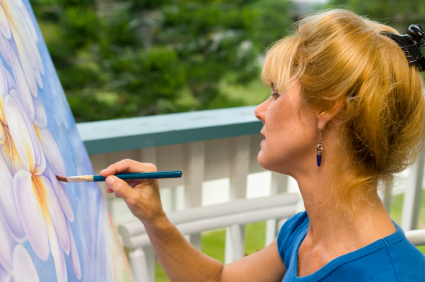
Art therapy is a branch of psychotherapy that utilises various artistic endeavours to allow participants to express themselves more freely. This is intended to help clients to cope with the difficulty they are experiencing and aid the recovery process. Art therapy is intended to provide a safe environment where people can express themselves via the art they produce, in the expectation that it will help them resolve their individual problems.
What Does an Art Therapist Do?
An art therapist is a professional who has typically qualified in one of the psychology disciplines, after which a post graduate degree has been achieved. People who have a background in teaching or nursing are also likely to have an advantage if they decide to enter the field of art therapy. Art therapists will establish a relationship with the client and aid them to deal with a range of psychological or social issues - with art as the major tool. A range of art forms can be utilised including painting, drawing, sculpture and photography. Other techniques that may be utilised to complement art therapy include relaxation and visualisation, music and dance. Art therapists are employed in a variety of organisations, including government departments, community services as well as in private practice. They can use art therapy to treat individuals or groups of all ages, where a wide range of emotional conditions can be addressed, including:
- Depression
- Anxiety
- Life changes
- Trauma
- Illness
- Disability
The art activities are focused on the process, rather than the actual output, which are designed to encourage the client to express themselves more fully. No experience or particular aptitude for art is needed to participate in art therapy. Once the artwork has been produced it can be used to analyse the client more fully, using the premise of self discovery through art - as dreams are used in psychotherapy. Art therapy for children with disabilities and special needs has also proven to be successful, with a range of techniques used to treat different conditions. It has also been successfully utilised to treat depression in children, with the artwork often serving as the primary means of a child communicating personal traumas, fears and feelings. This is especially useful as younger children often do not have a developed vocabulary - with art providing a direct means of non-verbal communication.
Benefits of Art Therapy
Art therapy can be utilised to achieve a range of goals for a client. These include the following:
- Developing a support network
- Learning how to relax
- Reducing stress
- Removing emotional blocks
- Developing or regain self confidence
- Expressing inner emotions
- Addressing difficult and personal issues
- Becoming more intimate
- Generating creativity and imagination
- Learning and developing coping techniques
- Feveloping and increasing communication skills
- Feveloping physical co-ordination
Find an art therapist in your local area on the pages of this site.
Originally published on Jun 10, 2010








